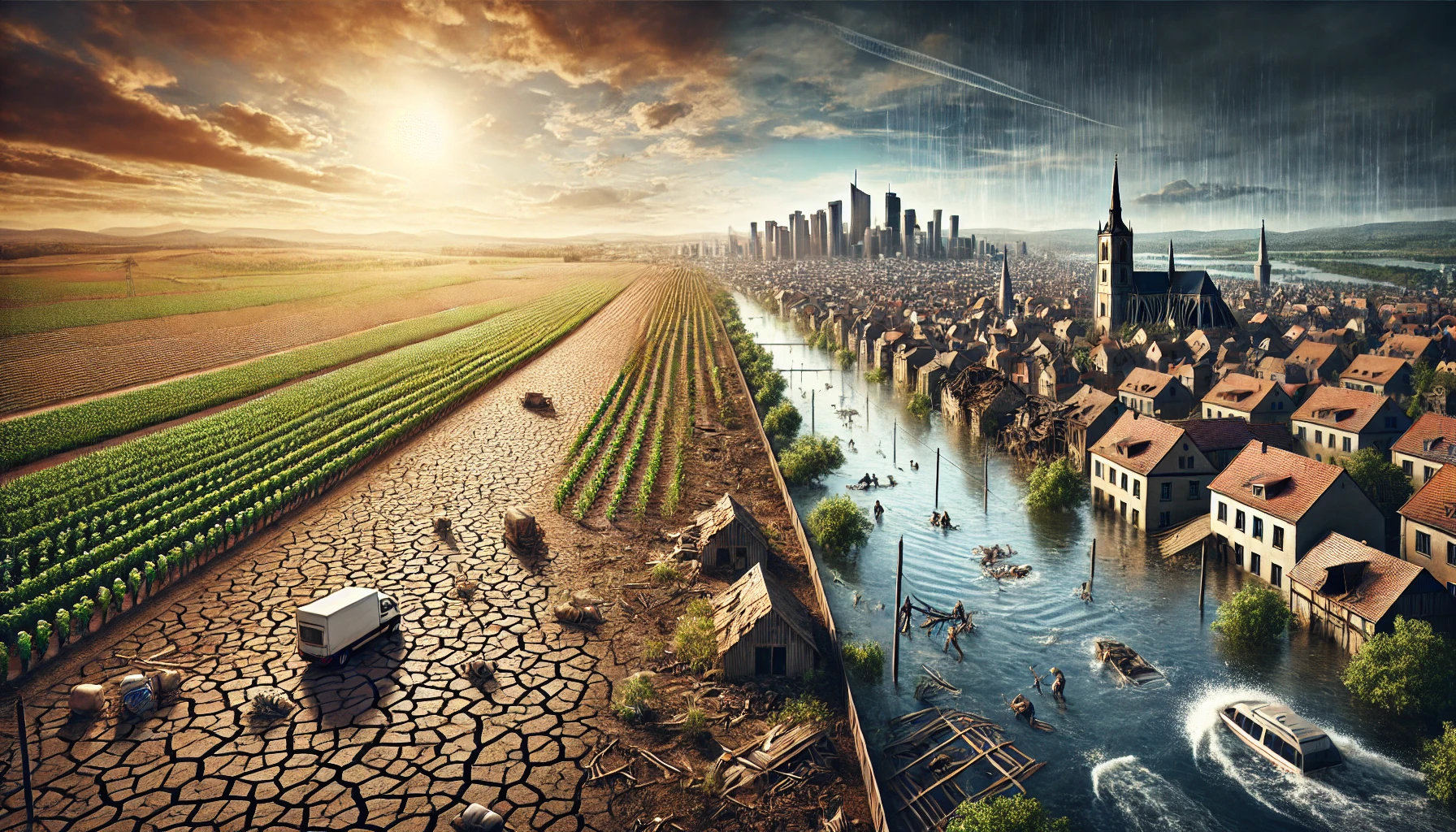From Drought to Floods: Understanding the Economic Fallout of Climate Events in the EU
The study examines the medium-term economic impacts of extreme climate events in EU regions, revealing significant output declines from heatwaves and droughts, while floods show contrasting recovery patterns based on regional income. It highlights the urgent need for targeted adaptation strategies to address disparities and foster resilience.

A study conducted by Sehrish Usman of Goethe University Frankfurt and Guzmán González-Torres Fernández and Miles Parker from the European Central Bank explores how heatwaves, droughts, and floods impact the economies of 1,160 EU regions. Using local projections and a difference-in-difference framework, the researchers analyze the medium-term consequences of these extreme events on productivity, labor markets, and investment patterns. As climate events become more frequent and intense, this study offers valuable insights into how local economic conditions shape resilience and recovery, uncovering troubling disparities between regions based on income, geography, and urbanization.
The Economic Toll of Heatwaves and Droughts
Heatwaves and droughts emerge as significant threats to regional economies, with long-lasting effects. Four years after a heatwave, affected regions experience a 1.4% decline in output, while droughts lead to a more substantial 2.4% drop over the same period. Heatwaves reduce total hours worked and employment in the short term but also prompt capital investment for adaptation measures like air conditioning. However, these investments often fail to translate into productivity gains, as adaptation infrastructure is less efficient than traditional productive capital. Droughts, on the other hand, have a compounding effect, suppressing both investment and productivity while reducing labor participation. The persistent effects of these events suggest that their economic impact extends far beyond immediate disruption, creating challenges for long-term recovery, particularly in regions lacking financial resources.
Floods: A Tale of Contrasting Recoveries
The impact of floods varies significantly depending on regional income levels. In high-income regions, floods often catalyze reconstruction efforts that lead to economic revitalization. These regions tend to "build back better," modernizing infrastructure and improving productivity. Conversely, low-income regions face substantial financial constraints that hinder recovery, leaving long-term output and productivity stagnant or declining. Coastal and urban areas generally fare better, benefiting from stronger infrastructure and diversified economies, while rural and inland regions struggle with prolonged disruptions. The study underscores the critical role of financial resources and regional capacity in determining whether floods serve as a moment of recovery or prolonged economic stagnation.
Demographic Shifts and Sectoral Struggles
Extreme weather events also reshape demographic patterns, particularly heatwaves, and droughts, which drive population declines in affected regions. Residents often migrate in search of better opportunities, further straining already weakened labor markets and reducing regional productivity. In contrast, floods do not typically cause significant demographic shifts, as reconstruction activities sometimes create economic incentives for residents to stay. Sector-specific impacts are stark, with agriculture bearing the brunt across all event types. Heatwaves reduce crop yields and worsen livestock conditions, while droughts amplify losses by depleting water resources. Floods disrupt planting cycles and damage farmland, compounding agricultural vulnerabilities. The manufacturing sector sees mixed outcomes, with high-income regions benefiting from adaptive investments and improved resilience. Service and construction sectors also vary, often showing stronger recovery in urban and wealthy areas compared to rural regions.
The Path to Resilience and Recovery
The study emphasizes the urgent need for targeted climate adaptation strategies to address the economic disparities caused by extreme weather events. Resilient infrastructure, such as irrigation systems, flood defenses, and heat mitigation technologies, can significantly reduce vulnerability and foster quicker recoveries. Financial mechanisms, including expanded access to insurance and public funds for low-income regions, are critical to bridging recovery gaps and preventing long-term economic divergence. The findings also highlight the importance of Europe-wide policies to ensure that recovery and adaptation are equitable across regions. Without coordinated efforts, the growing frequency and severity of extreme weather events are likely to exacerbate existing economic disparities and undermine regional stability.
The research paints a sobering picture of the medium-term consequences of climate change, showing that extreme weather events are not just isolated shocks but catalysts for persistent economic and demographic shifts. Heatwaves, droughts, and floods disproportionately affect vulnerable regions, particularly those with limited resources, and their impacts extend well beyond immediate physical damage. The insights provided by this study underscore the necessity of proactive measures to foster resilience, mitigate long-term economic losses, and ensure equitable recovery across Europe. As climate change accelerates, addressing these challenges will be critical to sustaining regional economies and fostering shared growth.
- FIRST PUBLISHED IN:
- Devdiscourse










